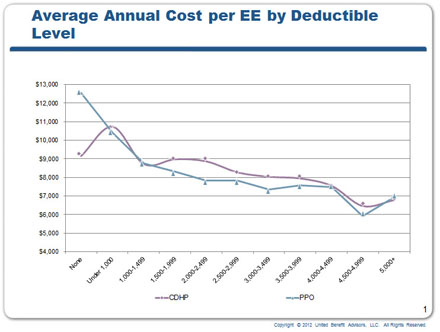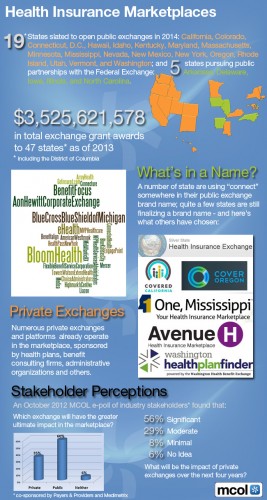March Brings Three Different Slices of Health Plan Consumer Experience Ratings
by Clive Riddle, March 28, 2014
This month, three annual proprietary consumer experience studies have yielded separate slices of the health plan consumer experience. J.D. Power, Temkin Group and Saatmetrix have all weighed in, and each shed favorable light on Kaiser Permanente, among other plans.
J.D. Power released results from their eighth annual Member Health Plan Study, in which they provide member satisfaction index rankings by region. Their 2014 Member Health Plan Study is based on responses from more than 34,000 members of 136 commercial health plans across 18 regions in the United States. The study was fielded in December 2013 and January 2014.
J.D. Power ranks satisfaction on a 1,000 point scale. Satisfaction is highest among health plan members in the California and Michigan regions (in a tie); the Indiana-Illinois and Mid-Atlantic regions (in a tie); and the East South Central and South Atlantic regions (in a tie). Satisfaction is lowest in the New England, New York-New Jersey and Southwest regions.
Top ranked plans by region, according to the J.D. Power study, were compiled in healthsprocket, in these regional lists:
J.D. Power 2014 Member Health Plan Study: Top Plan Scores - Southern United Stated
- Kaiser Foundation Health Plan (784) ranks highest among health plan members in the South Atlantic region (which includes Georgia, North Carolina and South Carolina) for a fifth consecutive year
- AvMed Health Plans and Humana (in a tie at 690 each) rank highest among health plan members in the Florida region, AvMed ranks highest in the Florida region for a third consecutive year
- Cigna (689) ranks highest among health plan members in the East South Central region (which includes Alabama, Kentucky, Louisiana, Mississippi and Tennessee)
- Aetna (677) ranks highest among health plan members in the Texas region
J.D. Power 2014 Member Health Plan Study: Top Plan Scores - Eastern US
- Kaiser Foundation Health Plan (732) ranks highest among health plan members in the Mid-Atlantic region (which includes Maryland, Virginia and Washington, D.C.)
- Capital District Physicians Health Plan (727) ranks highest among health plan members in the New York-New Jersey region
- Geisinger Health Plan (705) ranks highest among health plan members in the Pennsylvania region for a third consecutive year
- Tufts Associated Health Plans (681) ranks highest among health plan members in the New England region (which includes Connecticut, Maine, Massachusetts, New Hampshire, Rhode Island and Vermont)
J.D. Power 2014 Member Health Plan Study: Top Plan Scores - Midwestern US
- Health Alliance Plan of Michigan (711) ranks highest among health plan members in the Michigan region for a seventh consecutive year
- Dean Health Plan (703) ranks highest among health plan members in the Minnesota-Wisconsin region
- Medical Mutual of Ohio (697) ranks highest among health plan members in the Ohio region
- Health Alliance Medical Plans (692) ranks highest among health plan members in the Indiana-Illinois region
- Wellmark Blue Cross Blue Shield of Iowa (680) ranks highest among health plan members in the Heartland region (which includes Arkansas, Iowa, Kansas, Missouri, Nebraska and Oklahoma)
J.D. Power 2014 Member Health Plan Study: Top Plan Scores - Western US
- Kaiser Foundation Health Plan ranks highest among health plan members in the California region for a seventh consecutive year, with a score of 756
- Kaiser Foundation Health Plan (732) ranks highest among health plan members in the Northwest region region (which includes Oregon and Washington)
- Kaiser Foundation Health Plan (703) ranks highest among health plan members in the Colorado region for a seventh consecutive year
- SelectHealth (698) ranks highest among health plan members in the Mountain region (which includes Idaho, Montana, Utah and Wyoming) for a fifth consecutive year
- Blue Cross Blue Shield of Arizona (675) ranks highest among health plan members in the Southwest region (which includes Arizona, New Mexico and Nevada
Temkin Group pronounced the health plan industry “mediocre” and bestowed the highest customer experience rankings to Kaiser Permanente and Humana respectively, in releasing results from their fourth annual ranking of companies based on a study of 10,000 U.S. consumers that “examines the quality of the customer experience delivered by 268 organizations across 19 industries: airlines, appliance makers, auto dealers, banks, car rental agencies, computer makers, credit card issuers, fast food chains, grocery chains, health plans, hotel chains, insurance carriers, Internet service providers, investment firms, parcel delivery services, retailers, software firms, TV service providers, and wireless carriers.”
Bruce Temkin, managing partner of Temkin Group, tells us "consumers give pretty bad ratings to most health plans, as this entire industry needs a customer experience makeover. Overall, the health plan industry averaged a 56% rating in their study and tied for 17th place out of 19 industries.
Temkin ratings by plans included in the survey were:
- Kaiser Permanente (68%)
- Humana (63%)
- Medicare (62%)
- TriCare (62%)
- United Healthcare (59%)
- Blue Shield of California (58%)
- Aetna (57%)
- Health Net (55%)
- CIGNA (54%)
- Anthem (BCBS) (53%)
- CareFirst (BCBS) (48%)
- Medicaid (45%)
- Highmark (BCBS) (44%)
- Empire (BCBS) (42%)
- Coventry Health Care (41%).
Temkin noted that Humana (+12 points), Blue Shield of California (+7 points), and United Healthcare (+5 points) improved the most between 2013 and 2014. Coventry Healthcare (BCBS) (-18 points), TriCare (-9 points), Empire (BCBS) (-7 points), and Highmark (BCBS) (-6 points) declined the most since 2013. Kaiser Permanente with their 68% rating, was in 109th place overall out of 268 organizations across 19 industries. Humana, with a rating of 63% placed 160th overall. Coventry Health Care (BCBS) was in last place across all 268 companies in the ratings with their score of 41%.
Satmetrix Systems released results for their 2014 Satmetrix® Net Promoter® Benchmarks which measure and rank customer loyalty more than 219 brands across 22 U.S. industry sectors, including financial services, insurance, technology, online services, retail stores, electronics, travel and hospitality, and telecommunications. The Satmetrix Net Promoter Benchmark rankings are based on survey responses from more than 24,000 U.S. consumers nationwide who indicated they had significant experience with a company's products or services in the previous 12 months. A company's Net Promoter Score is based on customers' likelihood to recommend the company's product or service. The score is the percentage of customers who are promoters, rating the company 9 or 10 on a 0 to 10 point scale, minus the percentage who are detractors, rating 6 or lower.
The Satmetrix study for the health insurance sector followed these nine companies:
- Aetna
- Anthem
- BlueCross BlueShield of Florida
- BlueCross BlueShield of California
- Cigna
- Humana
- Kaiser
- Medicare
- United Healthcare
Like J.D. Power and Temkin, Satmetrix found Kaiser Permanente to be a dominant force, leading the health insurance category for the fourth consecutive year and “improving to an all-time high [Net Promoter Score] score of 40 points. The provider rated highest on a number of important key loyalty drivers, as patients appreciated its service features, company reputation and the feeling that Kaiser Permanente acts in their personal best interest.” Kaiser’s score was 23 points higher than the industry average. Like Temkin, Satmetrix ranked Human in second place: “with a score of 32 points, Humana saw significant improvement from 2013, moving up 14 points to beat out last year's second place finisher, Medicare (27 points).”
 Post a Comment By
Post a Comment By  Riddle, Clive |
Riddle, Clive |  Friday, March 28, 2014 at 10:18AM tagged
Friday, March 28, 2014 at 10:18AM tagged  Consumers|
Consumers|  Surveys & Reports|
Surveys & Reports|  health plans
health plans 




